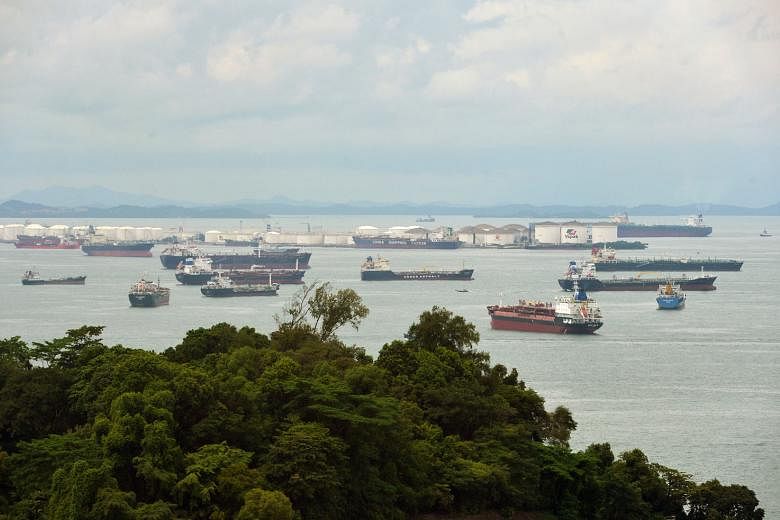Traders are increasingly storing oil in ageing supertankers in South-east Asia as they grapple with a supply overhang that has left the system clogged with unneeded fuel despite an Opec-led drive to cut production to prop up prices.
Around 10 very large crude carriers (VLCCs), all between 16 and 20 years old, have been chartered since the end of last month to store crude for periods ranging from 30 days to around six months, brokers told Reuters. Each VLCC can carry 2 million barrels of oil. These vessels are in addition to around 30 supertankers used for long-term storage around Singapore and Linggi, off the west coast of Malaysia.
Floating storage is an indicator of oversupply. "Too much unsold oil is headed to Asia," said Mr Oystein Berentsen, managing director for oil trading company Strong Petroleum.
A shortage of spare onshore storage in China, as well as an expectation that new Chinese crude import quotas for independent refineries will be announced soon, are also playing a role in putting crude into tanker storage in South-east Asia.
"Once China's quotas are released, you want to have oil close to China. Because onshore storage there is pretty full, the next easiest location is around Singapore and Malaysia," said one trader.
"This expectation of new Chinese orders also helps explain why future crude is more expensive than current crude. That's why we store it for later sale," he added.
One of the main drivers for storing oil in tankers is that crude prices for immediate delivery are cheaper than for future sale, a market condition known as contango.
The festering supply glut comes even as the Organisation of Petroleum Exporting Countries (Opec) pushes to withhold production until the end of the first quarter next year.
Brent crude futures, the international benchmark for oil prices, has fallen by 13 per cent since late last month, to around US$47 per barrel. Brent for delivery at the end of this year is US$1.50 per barrel more expensive.
"Floating storage does seem... viable, assuming time charter rates of under US$20,000 per day," said Ms Rachel Yew, an oil and tanker market analyst at Ocean Freight Exchange.
The current rate to charter a five-year-old 300,000dwt for one year is US$27,000 (S$37,350) per day, according to shipping services firm Clarkson. Rates for VLCCs at least a decade-old are much cheaper.
"It makes a lot of sense for a trader to pay US$16,000- US$19,000 per day to take an older VLCC for 30-90 days to store oil," said a Singapore-based supertanker broker, asking not to be identified.
REUTERS

